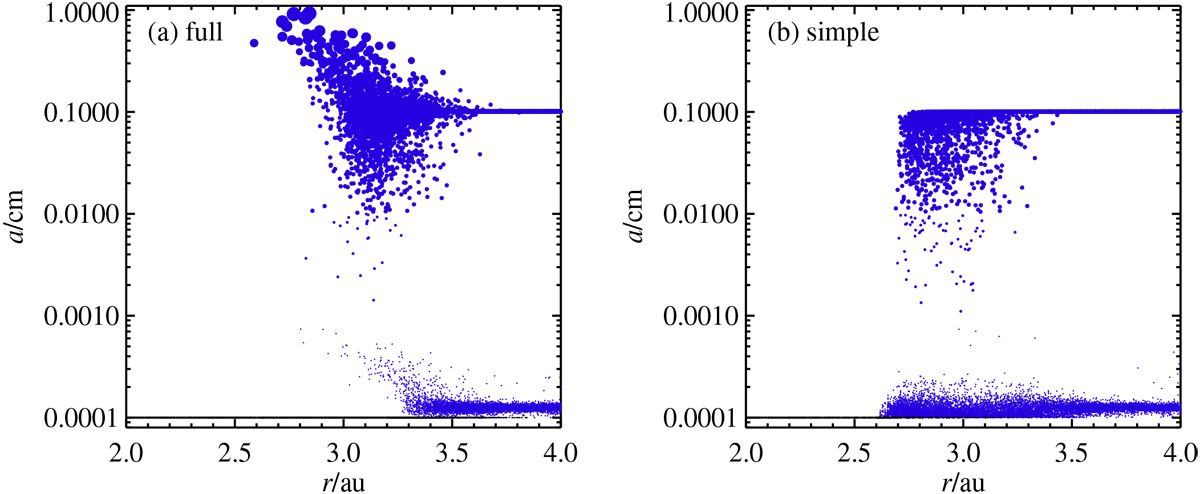Fig. 7

Particle sizes at t = 1000 yr when starting from micrometre-sized and millimetre-sized icy particles. The micrometre-sized bare silicate grains are shown in black, and ice-covered particles in blue. Panel a: results from the full temperature-dependent nucleation model, in which thecritical saturation ratio for heterogeneous nucleation is higher than for vapour deposition. Although a large amount of dust is present, the suppression of heterogeneous nucleation allows for growth only of the ice-covered particles, which quickly reach centimetre sizes. Panel b: results from the simple model, in which we ignore that a higher critical saturation ratio is needed for heterogenous nucleation than for vapour deposition. For micrometre-sized particles, growth by vapour deposition dominates, whereas for millimetre-sized pebbles the dominating process is sublimation. Thus, the available vapour is shared between the large amount of dust grains present, and larger particles do not grow.
Current usage metrics show cumulative count of Article Views (full-text article views including HTML views, PDF and ePub downloads, according to the available data) and Abstracts Views on Vision4Press platform.
Data correspond to usage on the plateform after 2015. The current usage metrics is available 48-96 hours after online publication and is updated daily on week days.
Initial download of the metrics may take a while.


